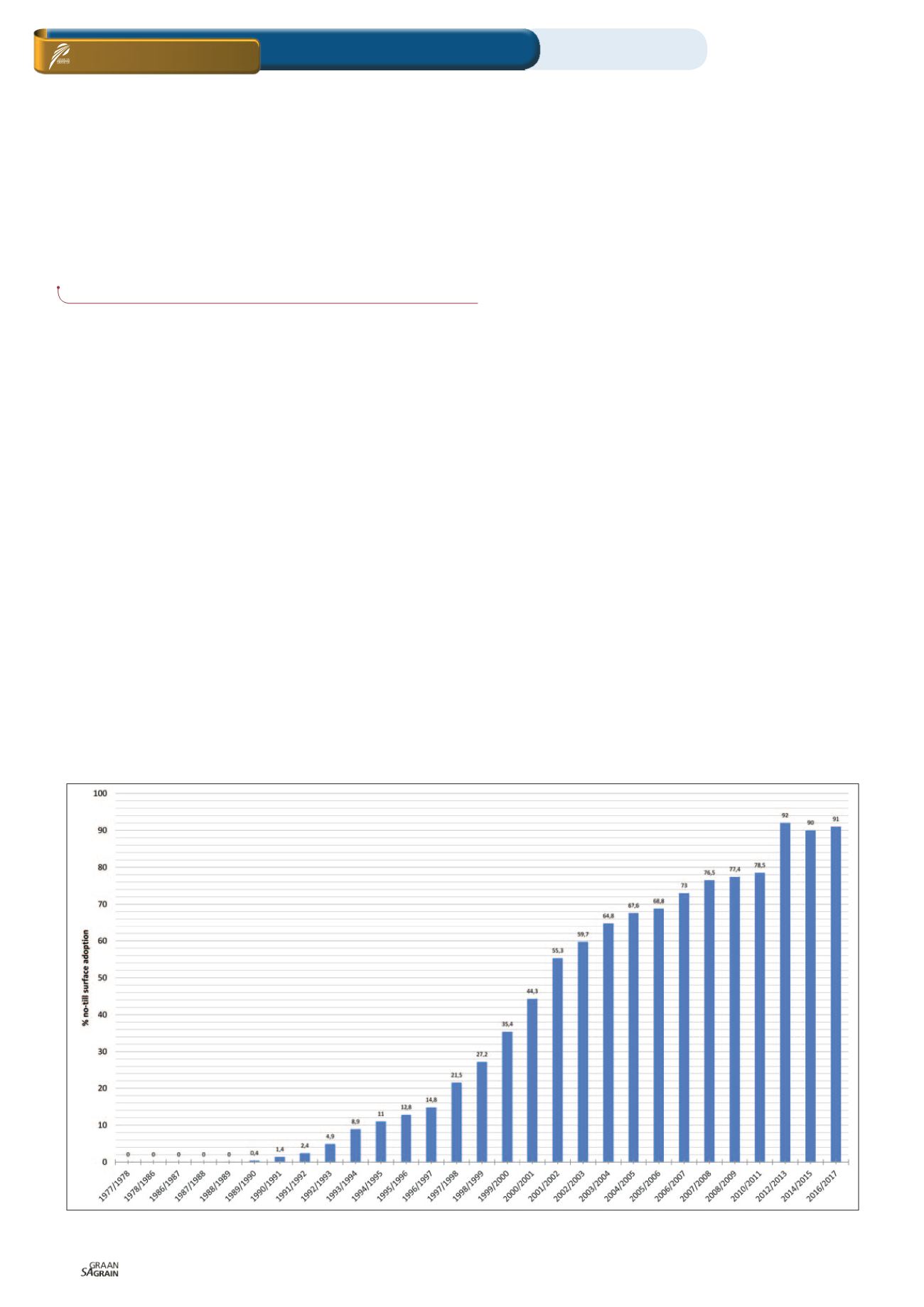

Oktober 2018
86
Conversion to no-tillage:
Perspectives from Argentina
F
ood production is under constant pressure due to variable
environmental factors and a growing population. Crop pro-
duction practices should be adapted to meet the ever
increasing food demands and to ensure economic and envi
ronmental sustainability.
Argentina produces enough grain to sustain roughly 200 million
people on an annual basis with a current human population of
only 42 million people. This makes Argentina one of the global lead
ers in grain production. Main crops include soybean, maize and
wheat (
Table 1
).
Climate and soils of Argentina
The Argentine Pampas is an extensive plain of approximately
760 000 km
2
extending from the eastern Atlantic coast across cen
tral Argentina to the Andean foothills in the west. The natural veg
etation consists predominantly of grasslands, although 54% of the
area has been converted to cropland. Mean annual rainfall ranges
from 200 mm in the west to 1 200 mm in the east at Buenos Aires.
Sandy soils are more frequent in the south and west, with loam and
silty loam soils scattered across the interior. Silt loess soil is the
predominant type found across the Argentine Pampas. It consists
of wind-blown material (approximately 70% silt, 15% clay and 15%
sand) with a very high crop production potential due to high water
holding capacity and fertility. These soils are extremely sensitive to
erosion by both wind and water if not protected.
History: Adoption of no-tillage
Conventional tillage played a big role in the Argentine cropping
systems until the early 1990s, where the mouldboard and disc
ploughs were central to the system. This led to extensive decreases
in soil organic matter and nutrients, while high levels of soil erosion
caused severe damage annually.
Grain yields varied according to the prevailing climatic conditions
of each growing season, with good grain yields achieved with
favourable rainfall and the reverse in low rainfall years. A few
producers across Argentina realised the cropping system they
followed was not sustainable, from both an economical and envi
ronmental point of view. They desperately had to search for alterna
tive approaches.
At the end of the 1970s, the first long-term no-tillage field trials
were initiated. The results were not positive as the technology that
is needed for a fully functioning no-tillage system was absent. One
of the major problems was the absence of effective weed control
technology. As weed removal by soil tillage was not possible, weeds
established continuously and resulted in crop losses.
At that stage, cropping systems consisted of a double-cropping
system. Wheat was grown during the winter and soybean had to be
established as soon as possible after the wheat had been harvest
ed. This provided a quick second crop harvest and effective soil
water use by crops.
On farm level
History / No-tillage / CA
Conservation agriculture
Stephano Haarhoff,
Department of Agronomy, Stellenbosch University
and
Dr Hendrik Smith,
conservation agriculture facilitator, Grain SA
Graph 1: Adoption of no-tillage in percentage of total cropped area in Argentina.
Source: Aapresid (
www.aapresid.org.ar
)
















